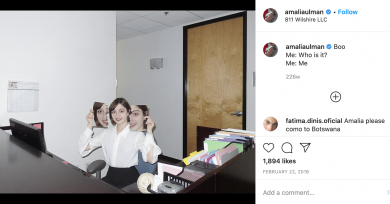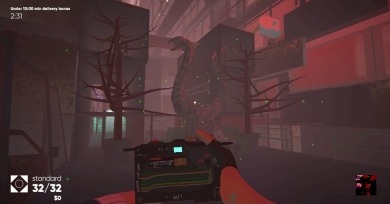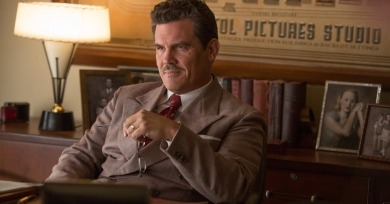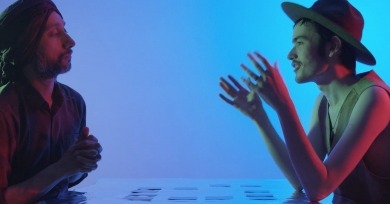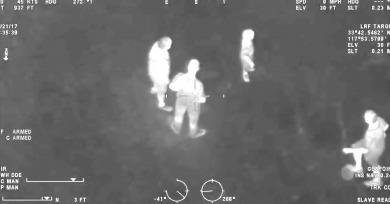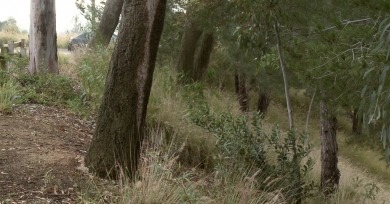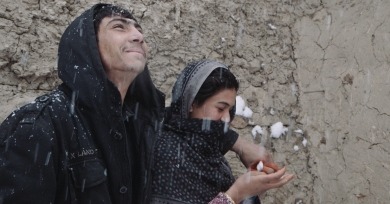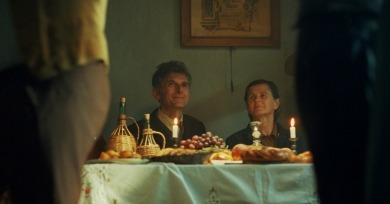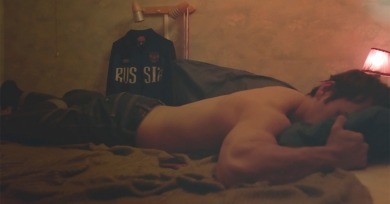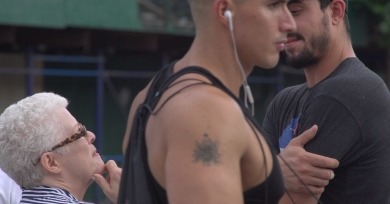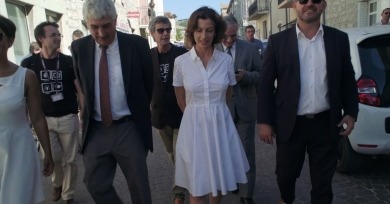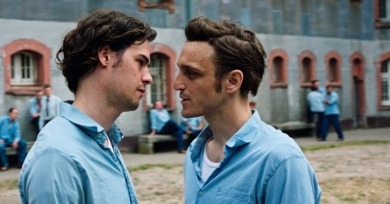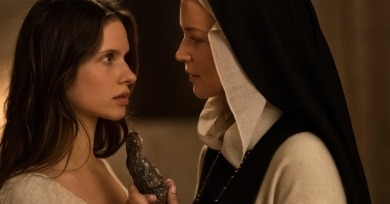Features
Ulman has described herself as an artist “based in airports”: functional travel hubs with a navigable universality, regardless of their actual location.
Faulkner evokes our uncomfortable relationship to the fascism that sits at the core of many games, a Pavlovian dopamine rush meant to mimic the very actions that imperialist militaries use to oppress, control, and murder in the name of jingoistic glory, and subversively offers an alternative path of interaction.
As a 2016 film about the 1950s studio system, Hail, Caesar! reminds us that Hollywood has always been a place of myth and self-congratulation, a dream factory that feigns progressiveness while serving national and hegemonic interests.
"As humans, we always want the fireworks. We want the show. But actually a volcano is always erupting. And, as is also true about cinema, the more you learn about the language of a director, the more you can appreciate the idiosyncrasies or the details."
Color is dulled entirely, and reality, visually and morally, appears black and white. When the world is reduced to such simple terms, all that's left is for you to hover your crosshair over that burning target and pull the trigger.
Unless the viewer is aware of the overall structure and has a stopwatch, no cut will be expected and each will appear devoid of motivation, at least according to the conventions that govern editing in Hollywood, art-house, and even many avant-garde films.
Through decades of a certain kind of documentary storytelling and news reporting, audiences are so used to seeing images of poverty and abjection that the even the smallest act of affection comes across as extraordinary and radical.
Certain forms are still anathema to what constitutes serious cinema, and that changes in approach, personnel, or temperament are acceptable so long as they do not disrupt our preconceived notions of the author’s vision.
There are fantastical elements in the film, mainly the presence of ghosts who play music when Dora and, later, Mario are near death, but they never intersect with the central relationship of Mario and Marta.
People reliving or articulating past traumas on screen is fairly standard in social issue documentaries. What is most striking about Silent Voice is that it presents its main subject, Khavaj, and his personal story without inflicting more pain or describing it in detail, even if the shocks to his mind and body are still painfully tangible.
An older woman walks along Steinway Street in Astoria with a strong sense of purpose. She is shot by an unknown cameraperson who wields his lens like a sniper, tracking her as she moves. The woman periodically stops men on the sidewalk, earnestly asking benign questions that quickly becoming intensely personal.
The film follows the creation of the Documentary Village, a festival and a post-production hub in the village of Lussas, in southern France.
Tender where most films of its kind are tough, Greet Freedom is nonetheless unflinching in its emotional honesty and highly detailed in its artistry. Also reviewed: Annette and Intregalde.
Verhoeven wants us to know who the real perverse parties are here, and he avoids charges of blasphemy in Benedetta by mining the history of the Catholic Church in rigorous, drippy excess. Also reviewed: Anais in Love, Bergman Island, Small Body, Three Floors.
